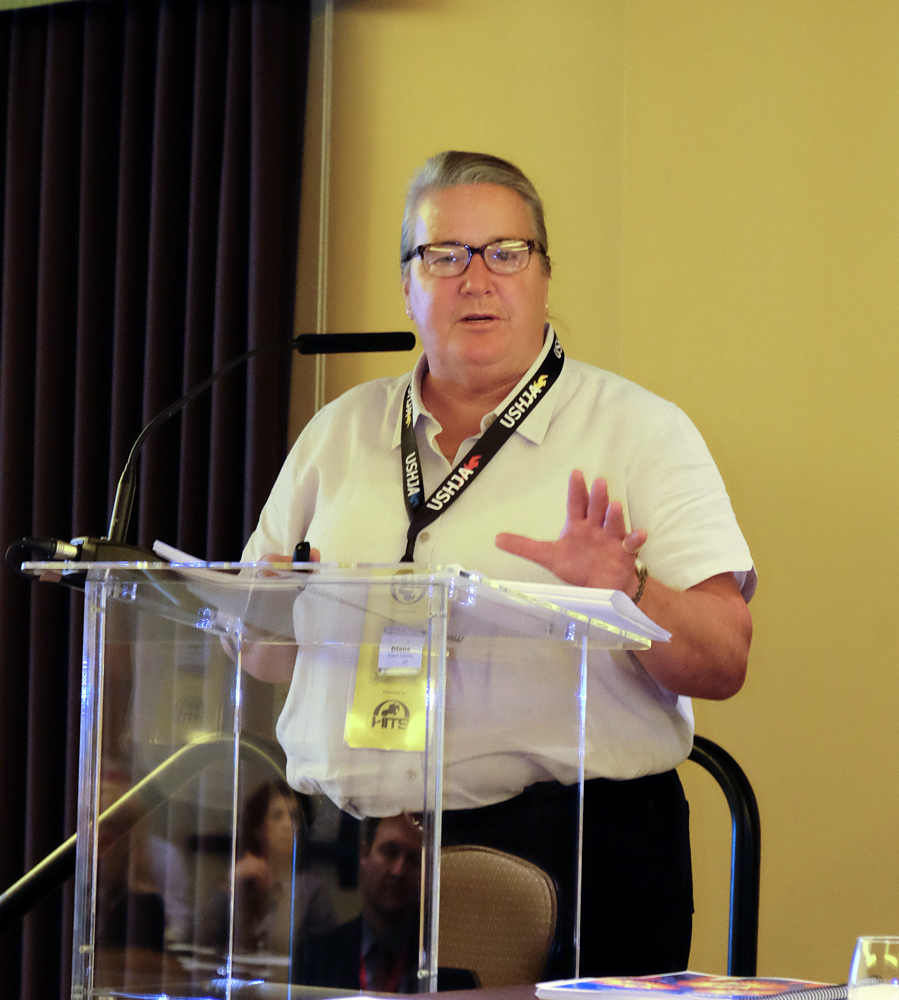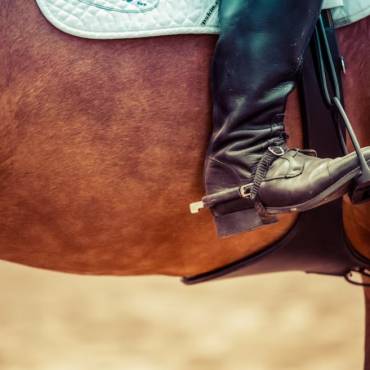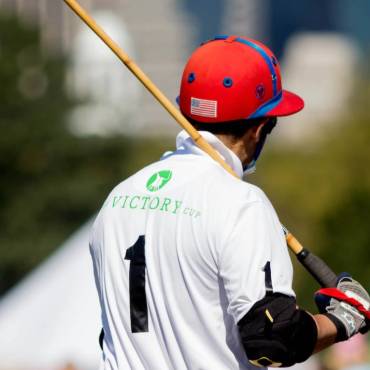Why was Athletes For Equity In Sport created?
The simple answer is to affect equity in SafeSport procedures. The corporation was formed when people from many sports started sharing stories of their experience. The group of people that got together at the beginning of August was starting to learn from attorneys and people who had been through the process about the flawed efforts of the SafeSport procedure. These stories were conveyed by people making charges and also by people that had been charged.
We were disturbed that in America these club rules were being applied—instead of our American judicial system—to such a serious topic. And it seemed very disrespectful, to both sides really, to not do better. So Athletes For Equity In Sport was incorporated.
Who are the other people involved?
It’s not for me to put names out in public.
When did you start to believe that SafeSport was problematic?
It’s problematic when a charge is made, and the alleged accused is thrown out onto the list, and there’s evidence to say this is not correct, and nobody will look at it.
I want to make SafeSport stronger. I want to negotiate with them. I want to put the attorneys and paralegals that I can pull together to do this work and match brilliance in our thinking and their philosophies to some degree. But I want to take the club rules out of the process, and I want to take the kangaroo court out of the process, and I want to put it where it belongs if we’re actually going to affect permanently the rest of people’s lives.
What are you referring to when you talk about “club rules”?
As a member of a national governing body, you’re signing your rights away when you agree to be under the arbitration of SafeSport. Now if we’re talking about the infraction of a rule at a competition, that’s one thing. But if you’re talking about taking [someone’s] livelihood away, that’s a much more serious topic.
You’ve said that everyone wants to protect children, that that’s a given. In the discussions of all the issues surrounding SafeSport, I’ve seen it compared to a pendulum that may have started out in one place (someone is innocent until proven guilty, with victims experiencing many barriers to reporting) and perhaps swung too far in the other direction, protecting children at the expense of the rights of the accused. How do you reconcile these competing interests, and what do you think is the right balance?
Therein lies exactly the crux of the point. Because SafeSport refuses to provide outward metrics or statistics, it makes it very difficult to know the extent of what the issues are. There is a place for sure to have reporting and some sort of evaluation going on with confidentiality connected in the process of reporting to SafeSport.
But SafeSport should not be the new moral code in the United States. It should not be above the law. It should not be judge, jury and sentencer, because our system is built and has operated for over 200 years on a much different theory, that all these different branches of evaluation in a serious topic such as this will have checks and balances. We are innocent until proven otherwise. There has to be the ability of a person to have a report, to have resources available at SafeSport to address it, and then to have the next layer of, “Where does this go to be investigated?”
Because they don’t have enough investigators to do what’s on their docket, they don’t have the process to do that. So when you start having fatigue and assumption and just normal human error factor in, that to me is way too high a margin of error when you’re dealing with people’s lives.
What are the primary changes you want to see made at SafeSport?
The ability for communication to start. We have a blueprint, and we have a plan. What we would like to do is sit down with the powers that be at SafeSport and go over the code line by line.
I think equity—defined as “fair and impartial”—has to be a part of the philosophy, which is not a part of their philosophy with “guilty first.” So there’s a mindset and a bit of a negotiation that has to happen to say, “What are the ‘musts’ that SafeSport has to have? What must be improved for those making accusations and also for those that are charged?”
One of the major complaints against SafeSport is their public announcement of violations while investigations are still ongoing or still subject to appeal. What do you think the appropriate balance is between protecting the reputation of an individual who has been accused and also protecting the larger community?
We’ve heard from actual cases that people with decades-old accusations, within hours, are placed on an initial report before an investigation has even been undertaken. That the person is placed on a banned list, and the notice goes out, and they’re not even given any word that they’re on the list; they hear it from someone else. That a person has to seek assistance to address this within a very short period of time, five days. They have to pay to have a hearing; it costs them $5,000. And they have to get an attorney.
So this is the example of things that could certainly be done differently. I know they have structured their process to save money and save time not to go through the process of whatever they perceive to be the problems of our judicial system. But when you’re talking about people’s lives, I don’t think that corners should be cut.
What about protecting children who might be coming in contact with a person who has been accused before a full investigation can be completed? For example, when a teacher faces an accusation, they are usually removed from the classroom immediately while the investigation plays out.
We are not about not protecting children, but the line cannot be drawn in a way where an assumption is made and then that’s made public.
The line of protecting people from an alleged accusation—and it is alleged until it is proven—has to be done in a way that protects people’s confidentiality until there is an opportunity to adjudicate a case on the merits, and hearsay is not evidence.
Of course, the difference between a riding coach and a schoolteacher is that the riding coach hangs out their individual shingle. And if you’re Susie’s mom looking for a riding instructor, you’re not going to know that person is the subject of an ongoing investigation if it’s not made public.
I’m all about somebody saying, “Hey, you know there are questions that are going to be asked, and we need to get together and get this handled.” I’m all about that conversation, but that’s a confidential conversation.
In a criminal action, a person may be arrested and go to court, but the criminal system decides the balance of how that person can interact in public. Moreover, in a criminal setting an attorney can be appointed for the accused. SafeSport’s position is to get names posted so no one in sport does business with that person, or possibly no others may be harmed. While SafeSport’s intent is to protect others, in many instances it does not.
There is a concern in the equestrian community, one I think you share, that people might use SafeSport as a way to punish someone they’re unhappy with, i.e. the ex-girlfriend deciding to get even or the student who’s been passed over making a false claim. Do you believe SafeSport is meting out punishments without adequately investigating claims of abuse? If yes, what examples or evidence do you have for that?
That is not a rumor; that is fact. We have actual scenarios where people have been falsely accused, where the investigation was closed and may have never gotten off the ground, and at the same time, SafeSport would not have had the time to look into those making false accusations.
People are weaponizing SafeSport in a way to say, “I don’t like what you said to me. I don’t like the answer that I got. I don’t like that I’m wrong, and I’m going to make it hell for you.” That has to be stopped. That’s an unintended consequence from the legislation.
In one of your letters to Congress, you recommended “referring credible SafeSport reports to law enforcement and maintaining confidentiality of the process to the public until a determination is made by a court of law.” Do you think all conduct that is possibly criminal needs to go through the court system? Is there a place outside of the courts to evaluate these complaints when the victims aren’t necessarily seeking criminal charges but still want to hold a potential abuser accountable (and protect other potential victims within the sport)?
If you read the recent Congressional bills to amend the Ted Stevens Act and SafeSport, you will see the recommendation that all cases be reported to law enforcement. That is because criminal laws have been placed in the books to be handled by trained law enforcement and lawyers trained in the legal criminal process. It provides that both parties get representation from a public defender or state’s attorney. The problem is many people have not gone to law enforcement because they may not have enough information for a legal case to stick. That is a huge problem because SafeSport weakens the standards of proof.
It is important for people to understand that the standard of proof is a slight tipping of the scale. That means that both sides can present what they consider evidence, and if the scales are level to each other, it just takes one slight look at some comment in the case to tip the scale to a violation. Fifty-one percent. That flimsy standard is incorrectly the difference in the rest of that person’s life. Would you think these standards are high enough if you were charged with a SafeSport code violation?
In the eyes of Athletes For Equity In Sport, SafeSport is an arm of the government, through Congressional enactments. They are a quasi-judicial actor, and they are labeling people as sexual predators without due process. That’s heavy! That’s too heavy for club rules.
But to play devil’s advocate, we can all think of particular cases, let’s say the example of rape, where it’s he said/she said, and it’s very difficult to win in a court of law because of “beyond a reasonable doubt.” Some people would say, when we’re not sending someone to prison and we’re not limiting their freedom, that there’s space for a lower bar.
Well, I think if you’re talking about taking a person’s entire livelihood and you’re talking about taking away their support mechanism, when you’re talking about making a tremendous change in the way that they conduct themselves and the way that they live their life, I don’t believe there should be a space of, “Well, it won’t hold up in court, but it ought to be somewhere.” I think that’s vague, and I think that’s irresponsible.
As I understand it, the SafeSport process for reporting and investigating abuse was developed to protect victims so they could report abuse without fear of reprisal, either from their abuser or from others connected to their abuser. Connections are everything in the horse world, and publicly “telling” on someone powerful may mean the end of a potential career in the sport. Many of the changes you’re advocating significantly reduce the protections for victims. (For example, making victims face their accuser, which is a powerful deterrent to reporting.) Do you think it’s possible to make the reporting and investigating process more fair to the accused without also making it more difficult for the victim?
I totally understand that people don’t want to say something is going on, because they feel like they’re going to be reacted to, or the reprisal, as they say. There’s a legal term called confrontation, the right to confront your accuser. This Constitutional right, in the current SafeSport policies is not allowed. It’s a difficult topic because to play fair is going to be emotional for everyone. If you’re going to only protect the emotions of the accuser and not the person that’s accused, then that’s not fair.
Athletes For Equity In Sport’s main focus is establishing a proper hearing before a ban takes place where that exchange of evidence and confrontation happen in the presence of an independent arbitrator under oath. You are aware that none of these proceedings are under oath?
There’s a big difference between somebody saying, “This happened to me,” and putting your hand on a Bible and having repercussions if you perjure yourself.
Let me circle back to privacy of the person making an accusation, since that isn’t something that is ever part of a court proceeding, and it seems like your preference would be for these to be much more like our court system…
I think that’s too broad. I don’t want this to be “like” anything. I want this to be built correctly for what it is. I want to take from what works and what is fair and equitable.
I’m not saying drag this person that’s making a charge out and say, “You must sit in a room while all this goes on.” But there’s no reason for them to be afraid to come forward and say, “This happened to me, and I’m not afraid of this being a stronger level of evidence because I know this happened to me.”
But it would be fair to say that’s very difficult for a lot of victims, especially if this was a manipulative and emotionally abusive relationship.
In our judicial system, we also have social workers and support systems for these people. None of that exists with SafeSport. So if somebody’s going to come forward and make a charge, let’s just not make sure they make a charge, let’s make sure they have some support.
Leaving aside your opinions on the merits of George Morris’ particular case, but imagining a hypothetical case in which a minor student is, in fact, sexually abused by a well-known, successful coach: What impact do you think this very public case has on whether or not someone reports such behavior to SafeSport? Do you think the changes you propose would still adequately protect such a victim and encourage them to come forward and report, regardless of how well known and respected the accused person is?
Here’s the thing that you and I don’t know. I don’t know what’s the truth. I don’t know that the person making the charge was truthful, and I don’t know what did or didn’t happen however many years ago it was. This case opens up an absolute microscope on the lives of icons in other Olympic sports.
We haven’t even gotten to the truth yet, and decisions have been made that are final. And that’s my point on all of these; it isn’t built strong enough. It isn’t built protective enough, to your point, for the person making the charge. There’s not enough protection for them in a more socially supportive way, and there’s not enough burden of proof to get to the truth.
We all want this process to be fair for everybody, but I feel like we may be looking for a unicorn in being able to protect victims better and protect the rights of the accused better.
I’m going to respectfully disagree there. I don’t believe, in America, with the brilliant minds that we have on the social topics and the legal topics, if people are willing to sit down and talk about it, I don’t believe we can’t find an answer. I know we can. I’m confident we can.
The changes Athletes For Equity In Sport seek are to ensure a better process for both the person making a charge and the person being named in a charge.
To clarify you’re referring to more social worker support and that kind of thing for victims, correct?
Sure. I don’t really even know what it all looks like because we haven’t even gotten to get there, but I understand that there’s more understanding that needs to be done. I understand that there needs to be a round table situation where brilliant people get together on all sides of this question, and they commit to not leaving that negotiation until something’s figured out, and that may be days. That may be a week.
That may be optimistic!
Well, listen, you know what, I go forward. Over, under or through, right? Right now is feeling a little bit like through.
I don’t want to belabor the point, but we have the MeToo movement going on now, and we hear “believe survivors,” because so often these people feel they are not believed. And we have, as you’ve talked about extensively, this court system that has been in place for 200 years that we feel works pretty well, and there are lot of brilliant minds involved in that too. And we haven’t in the court system necessarily figured out a great way to deal with the issue of sexual assault.
So let’s be the ones that get it done! Let’s pull together, the people around the country. Let’s be the ones that get it right.
Is that overly optimistic? Are we looking for a unicorn?
That’s your perspective, not mine. I have 80 people that I talk to almost on a daily basis in one advisory group or another, where we are all putting together pieces of information, and we all get together and meet, and then we elevate all of our intelligence on topics. We’re working on a solution; we’re not just throwing darts.
Photo: Mollie Bailey
Original article: https://www.chronofhorse.com/article/what-is-athletes-for-equity-in-sport





Add Comment